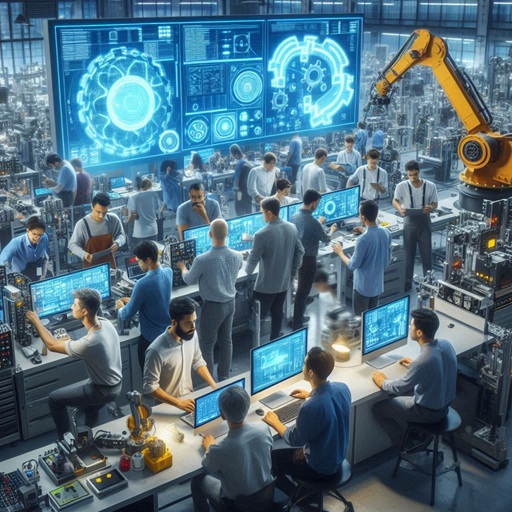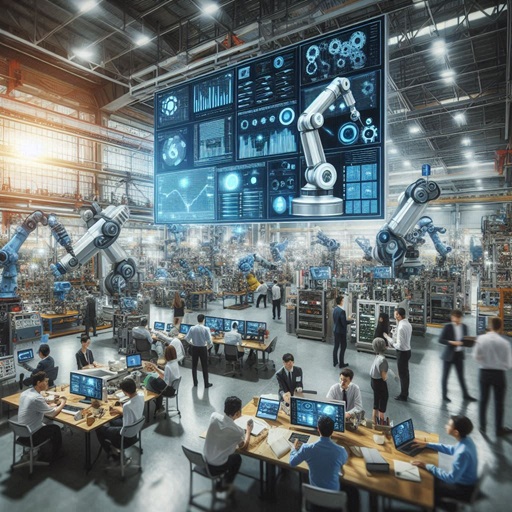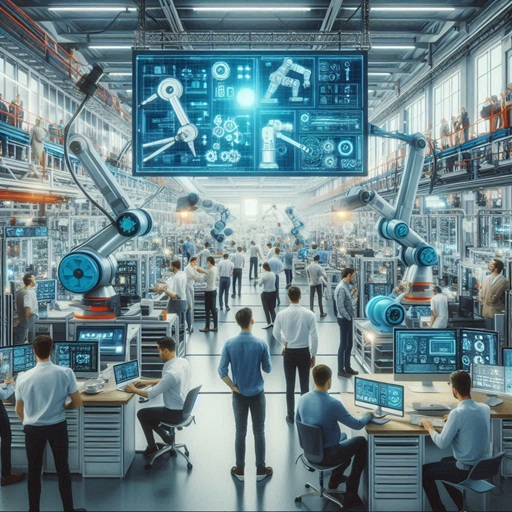The Motion Automation Market is a rapidly evolving sector that plays a pivotal role in modern industrial automation. With the increasing demand for efficiency, precision, and productivity across various industries, the adoption of motion automation systems has surged. This article delves into the intricacies of the Motion Automation Market, exploring its current trends, growth drivers, challenges, and future opportunities.
The global Motion Automation Market is estimated to be worth USD 16.5 billion in 2024 and is projected to reach USD 21.6 billion by 2029, growing at a compound annual growth rate (CAGR) of 5.5% during the forecast period from 2024 to 2029. This growth trajectory underscores the increasing importance of motion automation technologies in modern industrial and manufacturing processes.
The Motion Automation Market is experiencing significant growth due to a confluence of factors propelling its expansion. One of the primary drivers is the escalating demand for automation across diverse industries seeking enhanced operational efficiency and productivity. As businesses increasingly prioritize streamlined manufacturing processes, motion automation systems play a pivotal role in providing precise control over the movement of machinery and robotic systems.
Technological advancements, such as the integration of advanced sensors and communication protocols, contribute to the sophistication of motion automation solutions, further fueling market growth. Additionally, the rise of smart factories, Industry 4.0 initiatives, and a growing emphasis on achieving improved production quality and accuracy amplify the adoption of motion automation technologies.
Download PDF Brochure @ https://www.marketsandmarkets.com/pdfdownloadNew.asp?id=98406125
Key Components of Motion Automation Systems
The Motion Automation Market is composed of several key components that work together to ensure efficient and precise movement control. These components include:
a. Motors
Motors are the backbone of any motion automation system. They convert electrical energy into mechanical energy, enabling the movement of machinery. Common types of motors used in the Motion Automation Market include servo motors, stepper motors, and AC/DC motors.
b. Drives
Drives regulate the speed and torque of motors, ensuring optimal performance. They play a crucial role in energy efficiency and precision control, making them indispensable in the Motion Automation Market.
c. Sensors
Sensors provide real-time feedback on the position, speed, and torque of moving parts. This data is essential for maintaining accuracy and ensuring the smooth operation of automated systems.
d. Controllers
Controllers act as the brain of the motion automation system. They process input from sensors and send commands to motors and drives, ensuring coordinated movement.
e. Software
Advanced software solutions are increasingly being integrated into motion automation systems. These software platforms enable predictive maintenance, real-time monitoring, and data analytics, further enhancing the efficiency of the Motion Automation Market.
Market Segmentation
The Motion Automation Market can be segmented based on product type, application, and region.
a. By Product Type
- Motors
- Drives
- Sensors
- Controllers
- Software
b. By Application
- Manufacturing
- Automotive
- Healthcare
- Electronics
- Packaging
- Aerospace
c. By Region
- North America
- Europe
- Asia-Pacific
- Latin America
- Middle East & Africa
Growth Drivers of the Motion Automation Market
Several factors are driving the growth of the Motion Automation Market:
a. Industrial Automation
The increasing adoption of industrial automation across various sectors is a major growth driver. Automated systems enhance productivity, reduce labor costs, and improve product quality, making them highly desirable in the Motion Automation Market.
b. Technological Advancements
Innovations in robotics, IoT, and AI are revolutionizing the Motion Automation Market. These technologies enable smarter, more efficient systems that can adapt to changing conditions in real-time.
c. Energy Efficiency
With growing concerns about energy consumption, there is a rising demand for energy-efficient motion automation solutions. Companies are investing in systems that minimize energy usage while maintaining high performance.
d. Demand for Precision
Industries such as healthcare and electronics require extremely precise movement control. The Motion Automation Market caters to this demand by offering high-precision systems that ensure accuracy and reliability.
Challenges in the Motion Automation Market
Despite its growth potential, the Motion Automation Market faces several challenges:
a. High Initial Costs
The upfront cost of implementing motion automation systems can be prohibitive for small and medium-sized enterprises. This limits the market’s growth to some extent.
b. Complexity
Designing and integrating motion automation systems can be complex, requiring specialized knowledge and expertise. This complexity can act as a barrier to entry for some companies.
c. Maintenance
While motion automation systems reduce labor costs, they require regular maintenance to ensure optimal performance. This can be a challenge for companies with limited resources.
Regional Analysis
The Motion Automation Market is geographically diverse, with significant growth opportunities in various regions.
a. North America
North America is a leading market for motion automation, driven by the presence of major industrial players and technological advancements. The region is expected to maintain its dominance in the coming years.
b. Europe
Europe is another key market, with strong demand from the automotive and manufacturing sectors. The region’s focus on sustainability and energy efficiency further boosts the Motion Automation Market.
c. Asia-Pacific
The Asia-Pacific region is witnessing rapid growth, fueled by industrialization and urbanization. Countries like China, India, and Japan are major contributors to the Motion Automation Market.
d. Latin America and Middle East & Africa
These regions are emerging markets with significant growth potential. Increasing investments in infrastructure and industrial development are driving the adoption of motion automation systems.
Competitive Landscape
The Motion Automation Market is highly competitive, with several key players vying for market share. Some of the leading companies in the market include:
- Siemens AG
- ABB Ltd.
- Schneider Electric
- Rockwell Automation
- Mitsubishi Electric
These companies are focusing on innovation, strategic partnerships, and mergers & acquisitions to strengthen their position in the Motion Automation Market.
Future Trends and Opportunities
The Motion Automation Market is poised for significant growth in the coming years, with several emerging trends and opportunities:
a. Integration with IoT and AI
The integration of IoT and AI technologies is expected to revolutionize the Motion Automation Market. These technologies enable predictive maintenance, real-time monitoring, and enhanced decision-making.
b. Collaborative Robots (Cobots)
Cobots are gaining traction in the Motion Automation Market. These robots work alongside human operators, enhancing productivity and safety.
c. Green Automation
With increasing emphasis on sustainability, there is a growing demand for green automation solutions. The Motion Automation Market is expected to see a surge in energy-efficient and eco-friendly systems.
d. Customization
As industries become more specialized, there is a rising demand for customized motion automation solutions. Companies that offer tailored solutions are likely to gain a competitive edge in the Motion Automation Market.
The Motion Automation Market is a dynamic and rapidly growing sector with immense potential. By understanding the key trends, growth drivers, and challenges, businesses can capitalize on the opportunities presented by this market. As technology continues to evolve, the Motion Automation Market is set to play an increasingly important role in shaping the future of industrial automation.
FAQs
Q1: What is the Motion Automation Market?
The Motion Automation Market refers to the use of automated systems to control the movement of machinery and equipment in various industries.
Q2: What are the key components of motion automation systems?
The key components include motors, drives, sensors, controllers, and software.
Q3: What are the growth drivers of the Motion Automation Market?
Growth drivers include industrial automation, technological advancements, energy efficiency, and demand for precision.
Q4: What are the challenges in the Motion Automation Market?
Challenges include high initial costs, complexity, and maintenance requirements.
Q5: Which regions are leading in the Motion Automation Market?
North America, Europe, and Asia-Pacific are the leading regions in the Motion Automation Market.
Q6: What are the future trends in the Motion Automation Market?
Future trends include integration with IoT and AI, collaborative robots, green automation, and customization.



